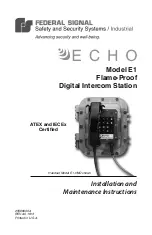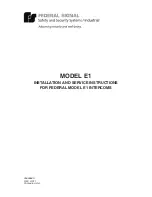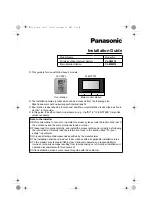
Jetter AG
Programming | 7
JX3-BN-EC User Manual
29 / 92
7.2 EtherCAT® object directories
Use with third-party
hardware
You can also use the JX3-BN-EC in combination with a controller that was not
developed and produced by der Jetter AG.
To establish an EtherCAT
®
connection between the third-party controller and the
JX3-BN-EC, you need the object directory of the JX3-BN-EC and the object di-
rectories of the connected JX3 I/O modules.
7.2.1 Overview
With the CoE protocol, EtherCAT
®
offers the same communication mechanisms
as in the CANopen
®
standard EN 50325-4:
■
Object dictionary
■
PDO mapping (Process Data Objects)
■
SDO (Service Data Objects)
This makes it possible to implement EtherCAT
®
in slaves that were previously
equipped with CANopen
®
at manageable costs.
Object dictionary
Since the EtherCAT
®
slave JX3-BN-EC is based on the CoE protocol, it contains
an object directory. The object directory is the interface with which the EtherCAT
®
master (user) can access all relevant slave parameters.
The object directory is divided into different sections. Each index section is as-
signed a specific meaning:
Index section
Description
0x0000 - 0x0FFF
Data Type Description
0x1000 - 0x1FFF
Communication objects
0x2000 - 0x5FFF
Manufacturer Specific
0x6000 - 0x9FFF
Profiles Specific
0xA000 - 0xFFFF
Reserved
Object
Each entry in the object directory is called an object.
An object consists of:
■
an index that identifies the object as a whole;
■
one or more subindexes, each of which contains elementary information.
Each subindex within each object has several attributes such as :
■
Data type
■
Access rights (RO = Read Only, WO = Write Only, RW = Read Write)
7.2.2 Object Dictionary JX3-BN-EC
Index
Sub-
index
Description/
Name
Type
Type of
access
Base
Type
Ele-
ment
s
0x1000
Device type
UDINT
RO
-
-
0x1001
Error register
USINT
RO
-
-
0x1008
Device name
STRING (9)
RO
-
-
0x1009
Hardware version
STRING (4)
RO
-
-
0x100A
Software version
STRING (4)
RO
-
-
















































